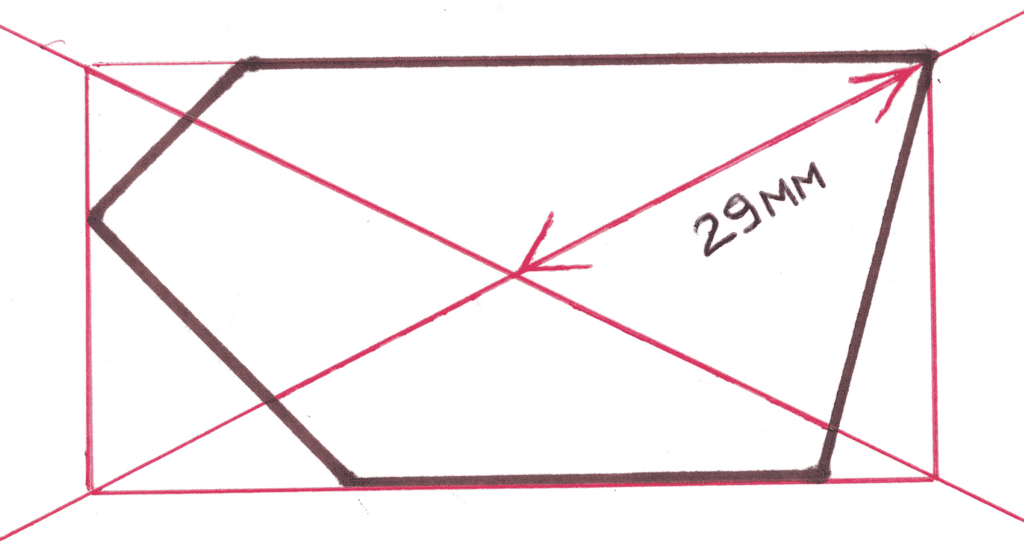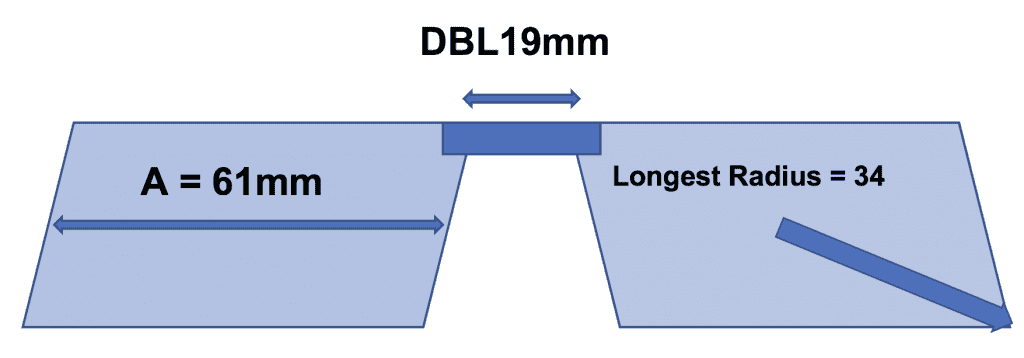Back to: 7: Finishing: The Optician’s Edge
Allow me to repeat myself. Super Crazy Wicked Important: Plano, basic CR-39 lenses with no coatings, bells or whistles, are available for about $1.00 a piece. You will need to have some to replace missing or damaged demo lenses. You will also NEED THEM to do test runs before you hit START on a $213 progressive in some quirky frame. If in doubt – check it out first. They come in handy for size tests, rimless shape samples, tint tests, experiments and so much more. Call us 800-525-1247 afternoons Central Time to order.
As you work through the OpticianWorks program you will learn about the complex relationship of the lens OC (or MRP) placement and the individual wearer. Part of being a competent optician worthy of a living wage is understanding how lens placement, lens power and frame shape are related.
You must have enough lens material to cut away to shape the lens to match the frame WITHOUT any gaps. You must do that while also matching the lens OC or MRP to properly align with the individual wearer’s measurements. You cannot add what you don’t have and you cannot “adjust” the measurements to make something work. You either have enough lens to cut away – or you don’t.
Q: If cut-out is such a big deal, why don’t they just make lens blanks really big?
A:
1: As lens blank size grows, the optics become compromised.
2: Cost of materials dictate you don’t want to create unnecessary waste.
3: Inventory storage could easily get out of hand.
4: As plus lens blank size increases, so does the lens center thickness creating added weight, compromised optics and cosmetically unappealing lenses.
Like other concepts we cover, this is not “easy.”
However, it is a must-have concept to fully understand.
Here is a must-watch video on the complex relationship of frame size, customer PD and lens blank cut-out.
Related to the concepts covered in the video is the MBS or Minimum Blank Size. MBS tells you (roughly) the smallest possible lens blank that can be cut to fit the frame and not have any gaps between the lens and the eyewire. Here is the thing, that last +2mm you see in the “formula” is a safety catch. So the MBS formula is more the MBS Rule Of Thumb. Great for a $3.00 CR-39 SV lens. Not so great for the wholesale $195 1.60 progressive with AR.
The only way to assure 100% cut-out and get the best/thinnest possible lens is to provide accurate frame measurements and shape trace to the lab and let the sophisticated lab software design the lens.
MBS is a good concept to know but it is not used very much any more.
The formula for MBS is:
MBS = ED + 2 X decentration + 2mm.
That is decentration per eye using monocular PD measurements.
Any difference, in any parameter, of the lens or customer will make a difference in the final product.
Things like:
- Plus R Minus L.
- Strong power in R but weak power in L.
- A narrow 28 MPD R but a wide 32 MPD L.
Calculating MBS is a multi-step process involving the boxing system and calculating decentration.
If you don’t know how to calculate decentration, that is covered in the next lesson.
ED is Effective Diameter and the effective diameter is 2X the longest radius measured from the eyewire center to the farthest point within the eyewire. This is usually equal to your “A” but that is certainly not always the case. As shown here, the more unique the frame shape the more important ED becomes. If I “box” this odd frame shape the longest radius I can measure is 29mm so my ED would be 58mm.
Rule-Of-Thumb: For small to medium eyewire openings, just add the number 4 to the A measurement to get ED.

Let’s look at this example:
A 56
ED 58
DBL 19
PPD 32/31
A + DBL = 75
75/2 = 37.5 (monocular frame PD)
37.5 – 32 = 5.5 Decentration R lens
37.5 – 31 = 6.5 Decentration L lens
MBS = 58 + 2 X 5.5 + 2
MBS = 58 + 11 + 2
MBS = 71
MBS Right Lens = 71mm
MBS = 58 + 2 X 6.5 + 2
MBS = 58 + 13 + 2
MBS = 73
MBS Left Lens = 73mm
If, for some weird reason, you had to rely only on MBS to order a lens you would need a blank 71mm or larger for your R and 73mm or larger for the L. Depending on your lens powers and your frame, that might be a stock item or it may mean that the lab will have to surface the job.
Example 2:

The longest single radius I could find when boxing it, drawing it out with a PD stick, #2 pencil and a sheet of paper was 34mm.
ED = 2 X Longest Radius so 2 X 34 gives us an ED = 68
ED is then plugged into the Minimum Blank Size or MBS formula, which is:
MBS = ED + 2 X Decentration + 2mm.
So if this customer had a PD of 64 and the “A” as shown is 61 and the DBL is 19, we would end up with a minimum blank size of 86mm.
61 + 19 = 80
80 – 64 = 16
16/2 = 8 in decentration for each eye
8 X 2 = 16
68 + 16 + 2 = 86
That job will in all likelihood need to be surfaced.
